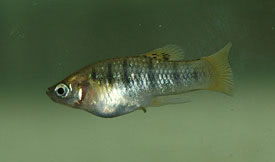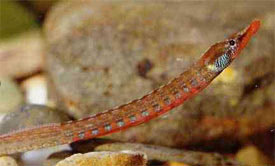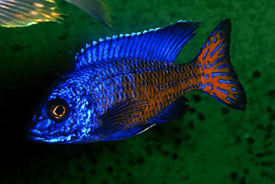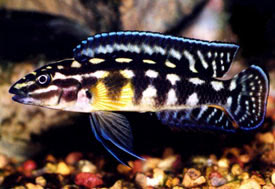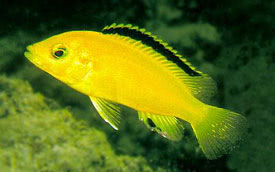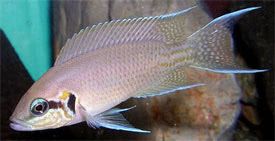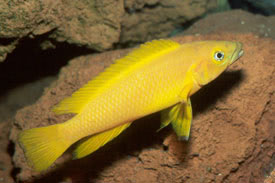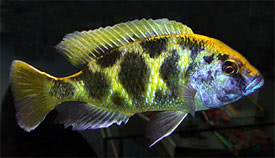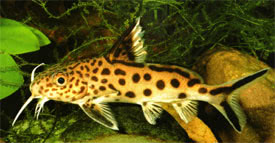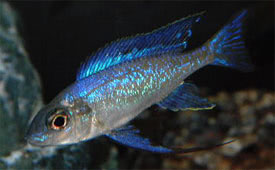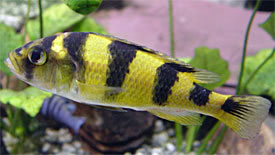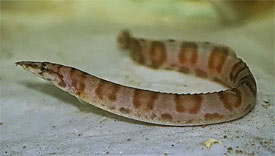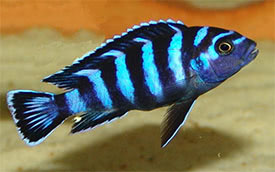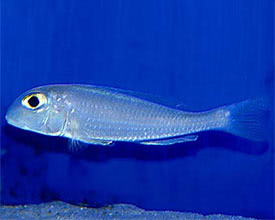
 Magyarul / Hungarian
Magyarul / Hungarian

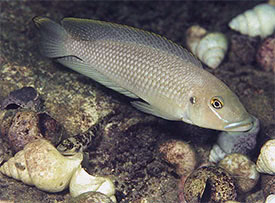
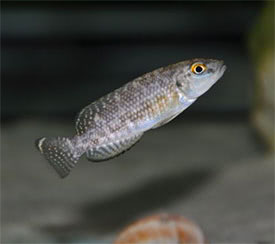
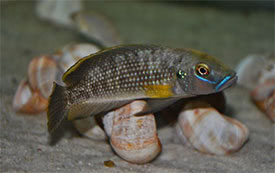

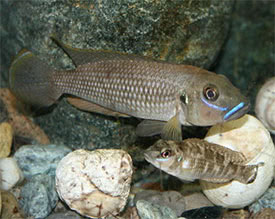
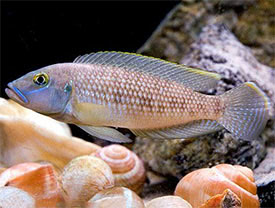
- Scientific name: Lamprologus callipterus
- Synonyms: Neolamprologus callipterus (Boulenger, 1906), Lamprologus reticulatus (Boulenger, 1906), Julidochromis elongatus (Steindachner, 1909), Neolamprologus elongatus (Steindachner, 1909), Lamprologus steindachneri (Boulenger, 1915), Lamprologus modestus nyassae (Borodin, 1936)
- Common name: Callipterus
- Group: Cichlids
- Distribution: Africa; endemic to Lake Tanganyika
- Size: male:15 cm, female: 6 cm
- Biotope: Inhabits the transition zones in the lake, where the rocky shore meets the open waters, and there are only scattered piles of rocks that cover the sandy bottom.
- Social behavior: Males are aggressive and territorial with conspecifics and with other fish too, so they should be kept with other species only in larger tanks.
- Diet: Omnivorous; In nature they feed on invertebrates and small fish, while in the aquarium they usually accept all kinds of live and frozen foods or even quality dried foods.
- Breeding: Quite easy
- Tank: Minimum 150 litres
- Population: 1 male and 5-6 females for 150 litres
- Decoration: Build piles of rocks in their aquarium, and leave some areas of open water between these. Use sandy substrate and place empty snail shells of all sizes into the sand, that the fish can occupy.
- Temperature: 24-27 °C
- pH: 7.5-9.0
- Hardness: 10.0-25.0 dGH
- Lifespan: 6-8 years
In nature the spawning pit of a mature male can be several meters in diameter and may contain hundreds of snail shells (Neothauma tanganyicense). Interestingly, when they are protecting brooding females, males do not eat and eventually become so weak that their territories are taken over by stronger fish. Immature and weaker males will form schools that may exceed 100 individuals, and these groups raid the habitat and devour anything that crosses their path and can be swallowed. Females are only found in areas containing the nests of dominant males. Extreme size dimorphism present among males, with both sizes displaying different behavior and reproductive performance. Sub-dominant males will sneak into a dominant male's territory and try to deposit sperm into shells containing females. Other smaller males that are small enough to enter the females? shells will hide in shells and try to fertilise any eggs they find.
http://www.fishbase.org/summary/8612
http://www.seriouslyfish.com/species/lamprologus-callipterus/
http://www.cichlid-forum.com/articles/l_callipterus.php
https://en.wikipedia.org/wiki/Lamprologus_callipterus
Guide to Tanganyika Cichlids by Ad Konings
A Tanganyika- és a Malawi-tó sügérvilága





